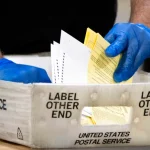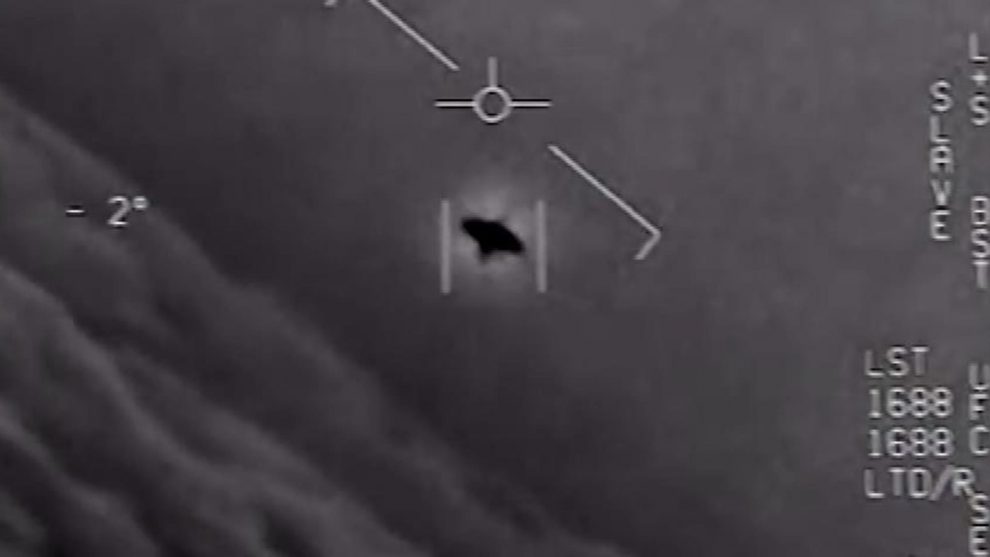An Office of the Director of National Intelligence report released Friday said there were at least 143 unidentified aerial phenomena between 2004 and 2021 that are “unexplained.”
The report said there were 144 reports of UAP between that time frame that were largely witnessed firsthand by military aviators and collected from systems considered reliable. Of those, 80 reports involved observation with “multiple sensors.”
The report said a UAP task force (UAPTF) was able to identify only one reported UAP out of the 144 reports “with high confidence.”
“In that case, we identified the object as a large, deflating balloon. The others remain unexplained,” it said.
Most reports described the UAP as “objects that interrupted pre-planned training or other military activity.”
The report said that most of the UAP reported “probably do represent physical objects given that a majority of UAP were registered across multiple sensors, to include radar, infrared, electro-optical, weapon seekers, and visual observation.”
In a limited number of incidents, UAP reportedly appeared to exhibit unusual flight characteristics, it said. However, it added that those observations “could be the result of sensor errors, spoofing, or observer misperception and require additional rigorous analysis.”
The ODNI report said “limited data and inconsistency” in reporting were key challenges to evaluating the UAP, and that no standardized mechanism for reporting them existed until the Navy established one in 2019. The Air Force adopted that mechanism in November 2020.
The number of UAPs could be much higher — the task force “regularly heard anecdotally…about other observations that occurred but were never captured in formal or informal reporting by those observers,” the report said.
The report did list potential sources of UAP, however.
It said that UAP documented demonstrated an “array” of aerial behaviors, suggesting there are multiple types of UAP requiring different explanations.
The report said there are five potential categories: airborne clutter, natural atmospheric phenomena, U.S. government or industry developmental programs, foreign adversary systems, and a catchall “other” bin. The descriptions of each category were as follows:
Airborne Clutter: These objects include birds, balloons, recreational unmanned aerial vehicles (UAV), or airborne debris like plastic bags that muddle a scene and affect an operator’s ability to identify true targets, such as enemy aircraft.
Natural Atmospheric Phenomena: Natural atmospheric phenomena includes ice crystals, moisture, and thermal fluctuations that may register on some infrared and radar systems.
USG or Industry Developmental Programs: Some UAP observations could be attributable to developments and classified programs by U.S. entities. We were unable to confirm, however, that these systems accounted for any of the UAP reports we collected.
Foreign Adversary Systems: Some UAP may be technologies deployed by China, Russia, another nation, or a non-governmental entity.
Other: Although most of the UAP described in our dataset probably remain unidentified due to limited data or challenges to collection processing or analysis, we may require additional scientific knowledge to successfully collect on, analyze and characterize some of them. We would group such objects in this category pending scientific advances that allowed us to better understand them. The UAPTF intends to focus additional analysis on the small number of cases where a UAP appeared to display unusual flight characteristics or signature management.
The report said the UAP pose a flight safety hazard and a possible national security danger — if some instances are part of sophisticated collection of U.S. military activities by a foreign government or demonstrate a “breakthrough aerospace technology by a potential adversary.”
The report said there were 11 reports of documented instances in which pilots reported near misses with a UAP.
On a potential national security danger, the report said:
We currently lack data to indicate any UAP are part of a foreign collection program or indicative of a major technological advancement by a potential adversary. We continue to monitor for evidence of such programs given the counter intelligence challenge they would pose, particularly as some UAP have been detected near military facilities or by aircraft carrying the USG’s most advanced sensor systems.
The report said explaining UAP will require continued analytic, collection, and resource investment.
The UAPTF’s long-term goal is to widen the scope of its work to include additional UAP events documented by a broader swath of U.S. government personnel and technical systems in its analysis.
“Consistent consolidation of reports from across the federal government, standardized reporting, increased collection and analysis, and a streamlined process for screening all such reports against a broad range of relevant USG data will allow for a more sophisticated analysis of UAP that is likely to deepen our understanding. Some of these steps are resource-intensive and would require additional investment,” the report said.
Story cited here.
























